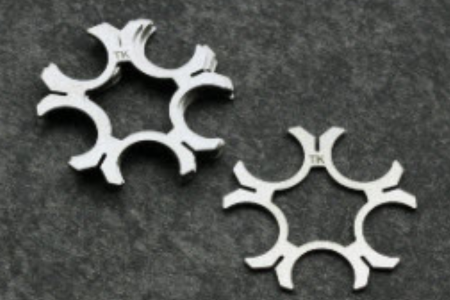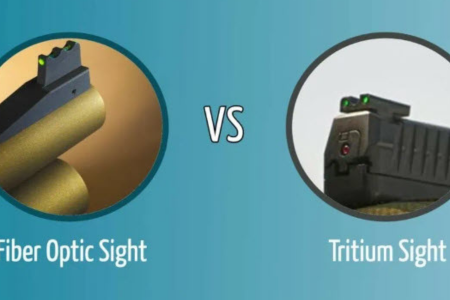There are as many paper target types as the day is long. There are the standard round bullseye targets, animal silhouette targets for hunting….turkeys, deer, etc. And there are targets in the shape of a human torso. And to extend the human torso types even further, there are photographic targets of actual bad guys…those in which the bad guy is pointing a gun at the shooter.
When selecting which targets you want to use, consider what your practice purpose is. Are you honing your skills for hunting? For competition shooting? For new gun familiarity? For self-defense? For fun? Since most of what Dakota Firearms is all about, concentration will be for familiarizing yourself with a new gun and for self-defense.

After you purchase a new gun, your goal is to gain mastery of it. To that end, your best target choice is the traditional round bullseye target. Why? Most of these targets contain either a series of concentric circle lines culminating in the center bullseye or they have a grid pattern of horizontal and vertical lines, or a combination of concentric circles and a grid. The last type is the best out of all the bullseye targets because you want to use these lines to judge how well or how poorly you are shooting.
Within this group of bullseye targets, there are two basic styles, “reactive” and “non-reactive”. The “non-reactive” targets are the traditional black and white targets with the bullseye area in black. Depending on your distance to the target and the lighting conditions at the range, any holes put into the black area of the target may be difficult to see. The only way to see how well you just shot is to get up close to the target. The other type is a “reactive” target. These targets have two distinct colors, one bright and one dark, with the dark area usually making up the bullseye. When you shoot at these targets, a bit of the light color seeps through and surrounds the hole you just made. So, if you have a yellow and black reactive target, if you shoot the black bullseye, the hole created by your bullet will have a small bead of yellow seeping through and surrounding the hole. This yellow bead showing up as the circumference around the hole makes the hole far easier to see at farther distances and poor lighting conditions. Based on just this eye relief alone, reactive targets are preferred over non-reactive targets.

Since you are not practicing for competition shooting, you will not practicing how close you get to the absolute dead center of the bullseye. Rather, you will be practicing to place your rounds into groups. If you are a new gun owner, your shot placement on the target will probably be all over the place. AND THAT IS OK! If you hit the target, you achieved your first victory. As you continue practicing, getting more comfortable with your new gun, and gaining mastery over it, by using the “Shooting Fundamentals” taught in our training classes, your shot placement will get better. The holes in the paper will begin to get closer together…into tighter groups. You may start off with a group the size of a dinner plate, but over time the size of the group will be that of a coffee mug. So, what if the group is to the left and outside of the bullseye? Nothing to worry about. That can be corrected if you are shooting in the same general area with regularity. New shooters attempt to get every shot into the bullseye, and get disappointed when they don’t. But if you are regularly shooting tight groups with bullseye type targets, now you are ready to move on to self-defense practicing.

Self-defense practice is more concentrated shot placement than gun familiarity training. Why? Because the purpose of self-defense training is to place shots to neutralize a violent attack. That means on an attacker, the best shot placement is “center mass”, better known as the chest. First, it is the largest area on humans, and therefore the easiest to hit after the adrenaline has kicked in because you are threatened by a violent attacker. Second, it contains the most vital of organs, the heart. The second best shot placement is the head, because it too, is vital, but smaller than center mass, and a little harder to master. Therefore, the better targets for self-defense are those which are silhouettes of the human torso. These generally have concentric circles around the chest and the head.
There are other subjects for targets, if you want to shoot just for fun. Some of these are of Osama Bin Laden, Dr. Fauci, snakes, zombies, etc. The download section of this web site has a few you can download for free for fun.
The other component of self-defense training is psychological. It is in our DNA to not take a life. But some day, you might need to do just that, because it may be either your life of the life of the attacker. So, to begin to condition your sub-conscious mind to shoot at another person, the absolute best targets for that psychological conditioning are the ones which are actual photographs of bad guys pointing one or more guns at you. Practicing with these types of targets, can, over time, subconsciously train your mind to permit you to shoot someone.



